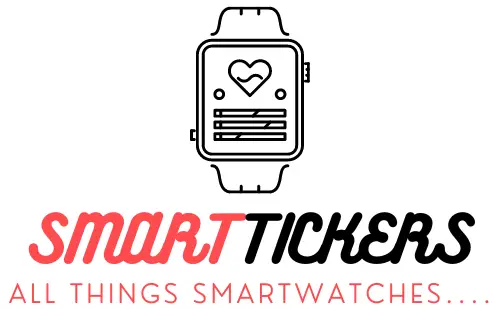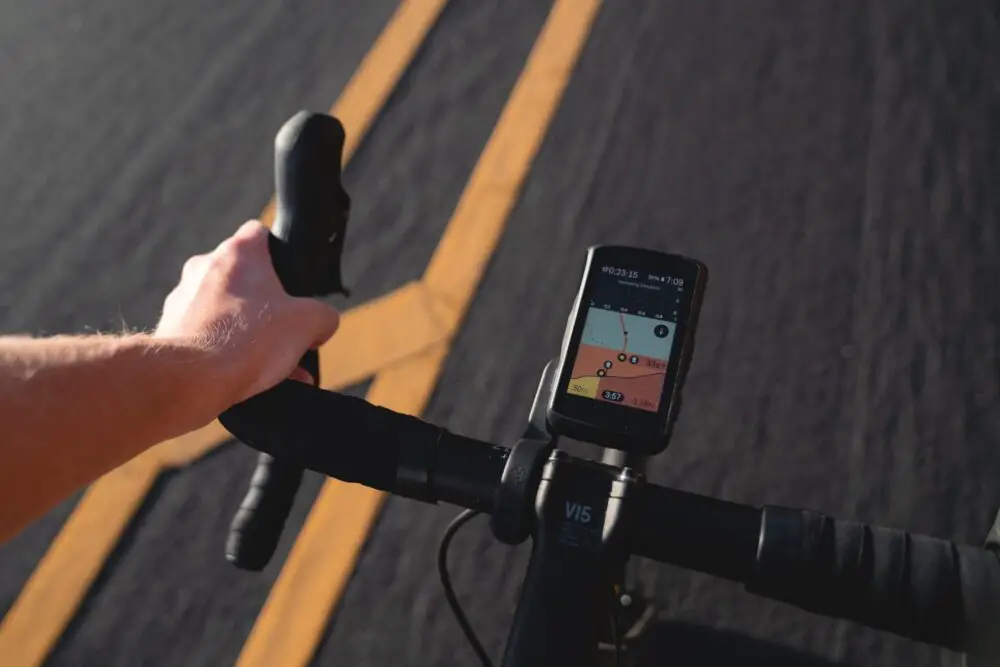When you think of all the tools that could make your bike ride better, one that stands out is the cycling computer. It offers a lot of features including navigational assistance and comes with a premium price tag. Unfortunately, it is largely restricted to usage on your bike.
A smartwatch, on the other hand, is a versatile gadget that performs some functions of the cycling computer but can also be used for a variety of other purposes. They include communication, health tracking, and more. The smartwatch does not restrict you to a specific sport or activity.
Which one should you buy then?
Why Make a Choice Between a Smartwatch and Cycling Computer?
Cycling computers boast great features that include GPS mapping and post-ride numbers. Where smartwatches provide these features and also track your health, some wonder why many riders prefer these computers over smartwatches. There are many vital reasons bikers often prefer using computers.
If you are a serious cyclist and most fitness tracking needs involve bike rides, you’ll do your best using a cycling computer. Understanding more about some of the advantages of a bike-specific device will help you make an easier choice.
Bigger Screen Makes a Difference
The information you need is easier to see when using a bigger screen. Some of the most common sizes for cycling computers range from 2.2 to 3.5 in. Because even the most compact options are more prominent than smartwatch screens, they are much easier to use with your bike in motion.
GPS Navigation
The bigger screen of the cycling computer is handy for its navigation functions. You can follow directions easily, making navigation more straightforward as compared to that offered by a wearable device.
A Perfect Position
Cycling computers are placed in a position that allows you to view the screen without breaking your concentration. Checking your position on a smartwatch might require you to check your wrist while riding, shifting your focus away from the road.
Why Do Some Prefer Smartwatches?
Despite the broad differences in features that give cycling computers the advantage, many smartwatch users are loyal to these devices. These features offer enough benefits for some to make continued usage preferable.
Multi-Activity Usage
As mentioned earlier, one of the things that makes many people consistently choose smartwatches is the range of activities you can track.
These watches were originally designed for runners but are versatile enough for common activities such as calling your loved ones, viewing WhatsApp messages from your group, setting reminders or even checking scores for your favorite Sunday Afternoon Football game.
Hiking and swimming are also activities where people use tracking features on smartwatches. However, if you’re interested in monitoring features that are easier to display, you will go right with choosing the bike computer.
Data Collection Abilities
Many smartwatches have heart rate monitors and power meters built in. These features work with the same data that a cycling computer collects.
Consider having a smartwatch if you track your oxygen levels and sleep patterns. These devices customarily have those features built-in. However, a cycling computer will be the better option if your activity tracking focuses on cycling.
Better Battery Usage
Smartwatches have improved battery life, with many matching cycling computer capacities. Some have reported to have up to 80 hours of battery life.
However, head units in price ranges similar to smartwatches may offer up to 100 hours of usage in battery-saving mode. These devices often boast solar charging capabilities, making them equal to smartwatches in usage.
Aerodynamic Superiority
Smartwatches may offer some aerodynamic advantages because computers tend to have less aerodynamic efficiency than smartwatches due to their size. Watches can be more efficient, but many note that efficiency gains are minimal.
More Cycling Computer Advantages
Despite the advantages of smartwatches, one of the most important differences between these devices and cycling computers is the computers being purpose-built for bike usage. These units track information in real-time and afterward, without intrusion from unrelated apps.
A Durable Option
Bike computers are some of the most durable fitness devices on the market. Dusty and wet conditions leave them mostly untouched. These computers may withstand some wrecks that would destroy smartwatches or phones.
The Price Impact
Most cyclists have reasonably simple needs. Cheaper bike-specific devices will provide the basic information that cyclists need the most. The main difference is that more expensive computers have more power than their cheaper counterparts.
Many cyclists with older cycling computers manage to hold on to them for many years. If you require features like GPS, expect to pay anywhere between C$400 – C$700.
Better Precision
Cycling computers with more straightforward features aren’t going to lose GPS signals or have other glitches. These devices can detect your distance or speed if you calibrate your computer regularly.
Precision is usually a non-issue if you keep the computer calibrated and the battery adequately charged.
How to Pick a Cycling Computer
If you’ve decided that a cycling computer (head unit) is your best option, you’re likely aware of the unique advantages. However, knowing why certain features provide a benefit and whether a specific model maximizes these features are two different points.
How Many Cycling Functions Are Available?
Distance and speed are two functions that are standard on these devices. Cadence, elevation, and power are some of the features available with the more advanced units.
There are also sensors available that can improve accuracy through better data monitoring. Some of the computers are sold in bundles that include these sensors.
What is the Display Quality like?
The price of a bike unit has a lot to do with the display quality. The computers with the lowest price usually feature black-and-white displays, while higher-priced units have color touchscreen displays.
Displays on these devices are usually customizable, regardless of the price. Some of the features you can customize include what data you see and how it shows on the screen.
Are There Heart Rate Monitor Functions?
The HRM functions on these devices have cardio and training data with similar quality compared to the most expensive fitness trackers. However, to use these features, you’ll need to take another couple of steps.
You’ll need to use a fitness tracker with HRM functions or a compatible chest strap connected to your computer. These features ensure that your heart rate data is shared with the computer.
How Advanced Are the GPS Functions?
Cycling computers without GPS are very rare today. Most of the data these computers provide relies on GPS.
Distance, elevation, navigation, and speed are some of the most important data types. When you use one of the more expensive computers, you’ll be able to use multiple satellite systems to get the best tracking.
Are There Any Mountain Biking Functions?
Computers with mountain bike functions can connect to Trailforks and similar sites. These apps offer navigational information and data about biking trails.
Some of the mountain-biking-specific metrics include air time, flow or descent smoothness, and jumps. These metrics are of crucial importance for biking in mountainous areas.
We have discussed some popular smartwatch choices for Mountain Biking here.
How Sophisticated is the Navigation System?
Alerts, when you go off-course, are available across the board with these computers. The base maps used in these settings vary, with the more expensive computers having the best features.
One of the differences between computers that have top-tier navigation systems is the similarity to car navigation systems. These systems can give you turn-by-turn directions to reach your destinations.
Which Wireless Functions Are Available?
Nearly all cycling computers connect wirelessly, sometimes with the assistance of a power meter or sensors. You can also connect these devices to a fitness tracker, laptop, or phone.
The majority of these computers have Bluetooth as well. The devices can also work with other protocols commonly in use.
Conclusion
Choosing between a smartwatch and a cycling computer is a difficult choice. Although both devices offer significant advantages, cycling computers, with their bike-specific features, will have the most to offer for anyone whose fitness routine involves a large share of biking.


